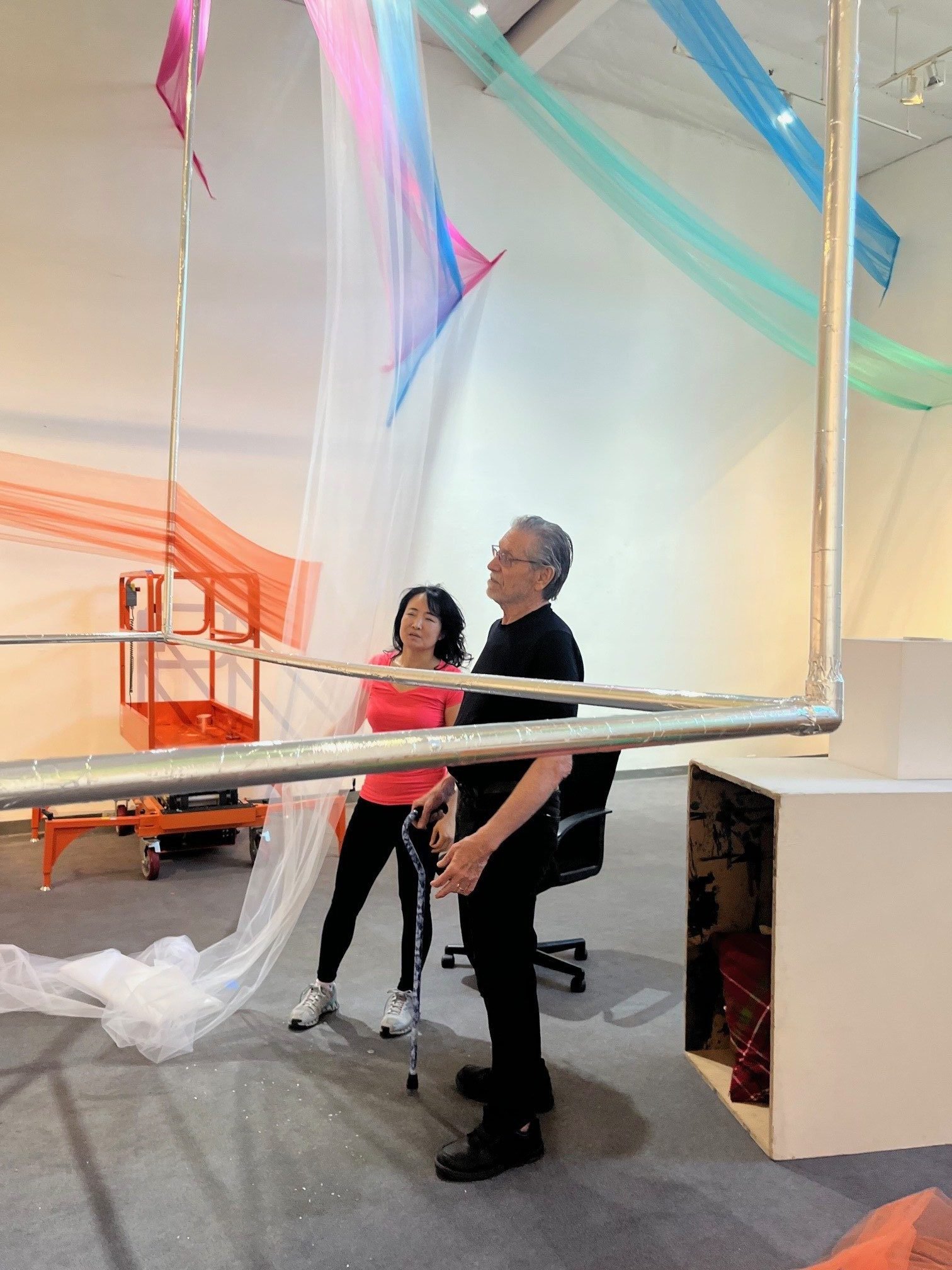Stephen Kaltenbach: Alchemy of Space and Place
Featuring a Collaboration with Seongmin Yoo
August 30 – September 30, 2023
In 1967, Stephen Kaltenbach first explored the ideas of both the popular Minimalist movement and works of a massive scale during the final months of his graduate studies at UC Davis. Inspired to represent the essence of his own art, he produced a series of drawings for unusually constructed spaces, he dubbed his Room Alterations. He remarked that they,”are not living rooms. Everyone is used to spaces designed for human comfort. My rooms don’t adhere to that at all because they are about other things. They are a confrontation…”
Through this perfection of the constructive devices, he created highly controlled, if not uncomfortable, environments to achieve his Minimalist intentions. The exhibited drawings from 1967 indicate his extreme spatial awareness and interest in optical illusions.
Decades later, beginning in 2018, he began to re-contemplate his early designs. Adopting and bolstering the successful components of his built Room Alteration designs, he produced the drawing for Inverted Pyramid Room. In particular, his re-use of the pyramid shape following his great success at the SFMOMA exhibition is a testament to his ability to self-reflect on his own career. Five years later, in 2023, this room is now finally accessible to the public as only the third full-realized Room Alteration ever built. The stark, white walls, the lack of visual access to the suspending cables and light sources, and the imposing size of the pyramid all create a sense of unease.
Experience the distinctive ways that Stephen Kaltenbach, the great pioneer of conceptual art, transmutes space for two unique, site-specific projects. His construction of a world-famous room design from the 1960s will complement a floor-to-ceiling, assemblage collaboration with artist, Seongmin Yoo.
The John Natsoulas Gallery is thrilled to be hosting the newest exhibition of Stephen Kaltenbach’s space altering, installation art. Over the course of his career, Stephen Kaltenbach has been a critical voice in Conceptual Art. Never limiting himself in his practice, Kaltenbach has explored countless media in order to pose, and occasionally answer, questions about the fundamental definitions of art and the greater meaning of life. As a graduate student at UC Davis, studying ceramics and painting at the height of the Funk Art movement, Kaltenbach began to contemplate the traditions of fine art. During his meteoric rise in the late 1960s, he showed in high-profile solo exhibitions at SFMOMA and the Whitney and in some of the most groundbreaking gallery exhibitions of the time. By 1970, he relocated back to California, where he became one the region’s most acclaimed artists. Since that time, Kaltenbach has continued to elude definitive definition in his practice. Never abandoning his conceptual interests, Kaltenbach has pursued a myriad of provocative projects using unconventional media or designs that require a cerebral interpretation by a thoughtful audience.
This exhibition blends the past and present. A full-scale construction of a room alteration, the first built since the 1960s, will stand alongside an entirely original site-specific multi-media installation. Alongside fellow artist Seongmin Yoo, Kaltenbach presents an assemblage installation entitled Epicenter, featuring extensive drapery. The full-room installation offers viewers the opportunity to walk throughout the third floor of the gallery to participate in an immersive experience of color and light. The dichotomous approach of these two installations provides a deeper understanding of what it truly means to transform space and place.
The Opening Reception for the exhibition will take place on September 2, 2023. It will beginning at 7:00 PM, and it will feature live music and refreshments
A dance performance, by the Linda Bair Dance Company, will take place on September 8, 2023. It will begin at 7:00 PM.
SUSPENDED INVERTED PYRAMID ROOM
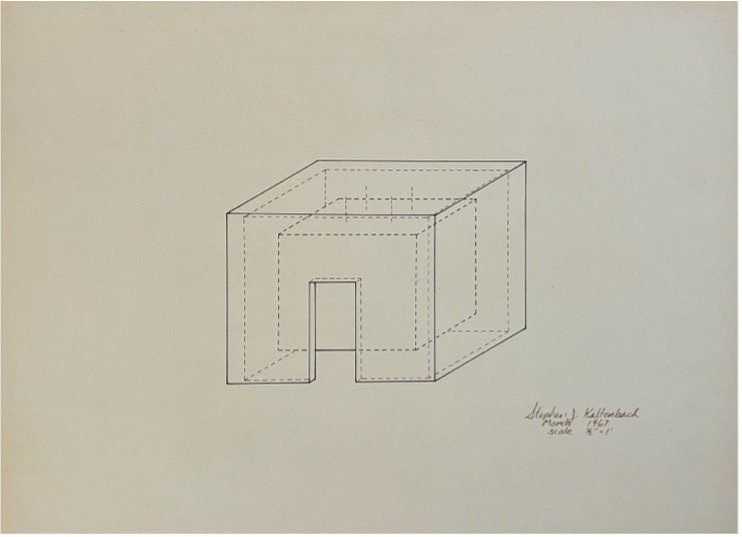
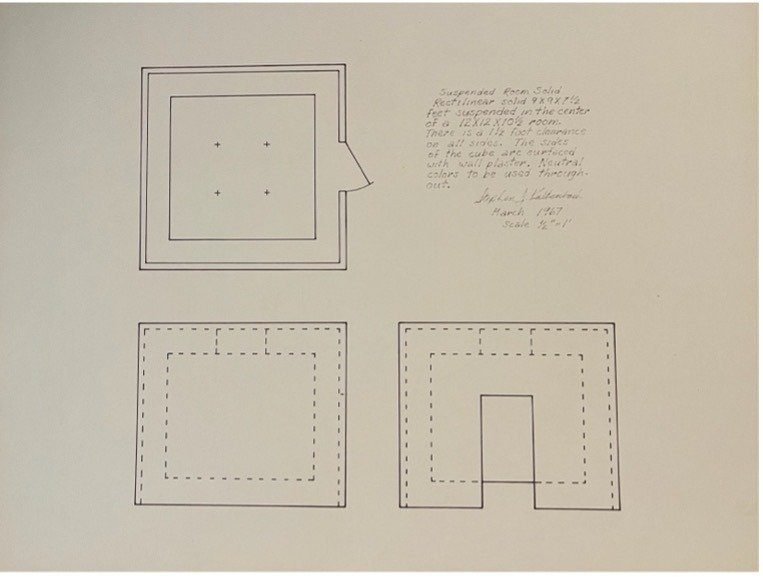
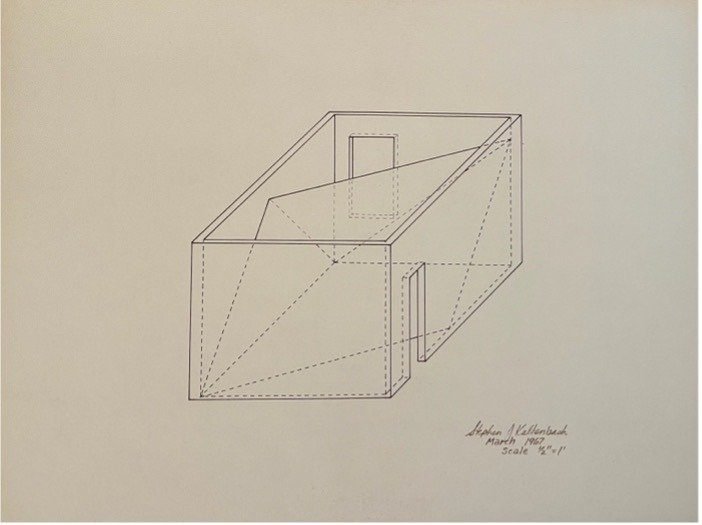
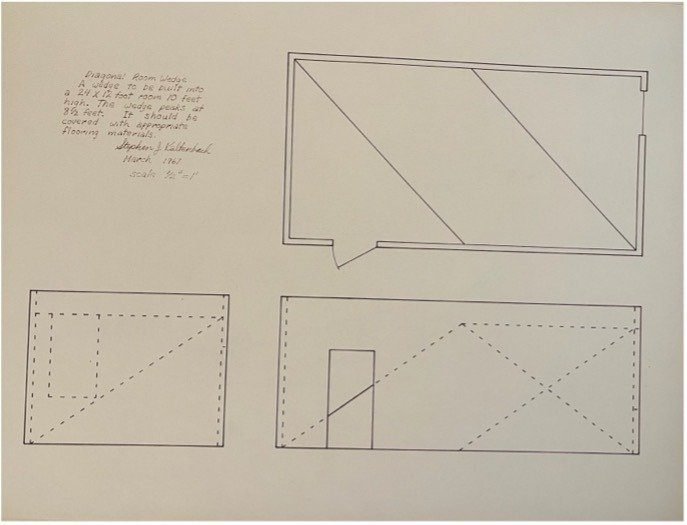
EPICENTER
Stephen Kaltenbach and Seongmin Yoo’s collaborative site-specific installation blends their artistic styles and experiences together, thus creating a third person. They saw the room’s potential, specifically the large window, and wanted to transform the space by mimicking light. Although they used fabric, they contended that the material itself was less important than the replication of light and the way it refracts and bounces through the room. As a method of drawing, the different colors of fabric represent the energy of light. Much like a prism, the cube a the center of the world seems to refract bifurcated rays of light.
Kaltenbach’s geometric and hard-edged background alongside Yoo’s vibrance and softness makes for an incredible collaboration. Known for her inventive use of space and materials, her body of work reflects her blending of Eastern and Western aesthetics. She also works in diverse media, but fabric is often her choice-material. We see in the 2023 Venice Biennale that fabric has become a dominant part of modern art, so not only are they moving the history of conceptual art forward, but they are also breaking down the traditional white cube of a gallery and making it come alive. They both involve drawing in their installations, and this fusion of differing perspectives resulted in a third person that severed itself from the white cube, culminating in a more inclusive and immersive art experience that gives the viewer a chance to walk through the whole space.
“My expression, once deemed ordinary and familiar within my own thoughts and existence, revealed itself as something more profound. This revelation ignited an intensified feeling within me, propelling my artistic endeavors to become a channel for shared dialogue and mutual understanding.” – Seongmin Yoo
“I think that conceptual art is about art. It is an emphasis of a position of art, one way to look at art. New art is often an aspect of old art emphasized with the older percentage removed. I think there have always been concepts in an artist’s production. Praxiteles’ conception of the gods or Duchamp’s ready-mades, or the conception of the possibility of painting a painting about nothing or nothing real. Conceptual art is the strengthening of the head aspect and the minimizing of the other aspects, like the visual. Besides, with the excess attention given to the development of art thinking, it’s not surprising that art thinking itself should receive the emphasis necessary to become a movement.” – Stephen Kaltenbach
This time-lapse video showcasing the installation of Epicenter demonstrates the careful considerations the artists gave to both natural and artificial light. Yoo’s delicate hanging of the translucent fabric captures the uniquely colorful spectrum of visible light.

